Optical telescopes receive electromagnetic radiation in the form of the visible light spectrum and we interpret that information with our eyes. The orbital telescopes like Hubble can take in a range of information like UV rays that our atmosphere blocks land-based telescopes from viewing.
The land-based telescopes have certain advantages. You don’t have to mount a Space Shuttle to repair a malfunctioning mirror, for example, as NASA had to do with the Hubble. Extra Large Telescopes (ELT) are still bringing in great discoveries and spectacular images.
-
Magellan 1 & 2
Location: Chile
Mirror size: 6.5m (21 ft.)
First used: 2000 – 02
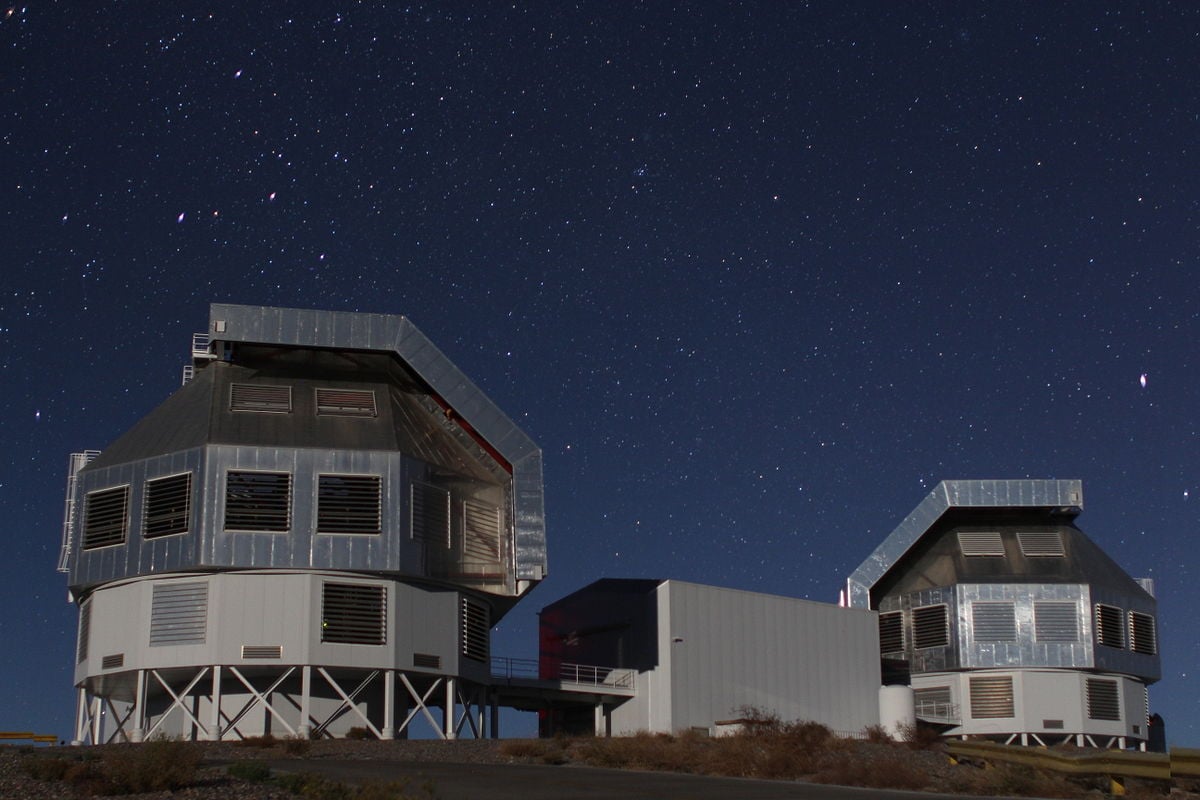
Source: By Jan Skowron [CC BY-SA 3.0] via Wikimedia Commons
The Magellan telescopes are twin 6.5 m telescopes used in surveying the galaxies for planets. A consortium led by the Carnegie Institution for Science constructed and operates the observatory. They are aided by the University of Arizona, Harvard University, the University of Michigan and the Massachusetts Institute of Technology.
Each telescope has its own instruments that allows each telescope to collect certain information. One is named for Walter Baade and the other for Landon Clay.
Did You Know?
The Magellan Planet Search Program operates out of the Las Campanas observatory. The Magellan “Clay” telescope looks for stars with a variation in the speed with which it moves towards Earth. Those stars may be orbited by planets.
-
MMT Observatory
Location: Mount Hopkins, AZ
Mirror size: 6.5m (21ft.)
First used: 1998

Source: By Happa [CC BY 3.0] via Wikimedia Commons
The telescope at Mt. Hopkins used to be much different. From 1979 to 1998, the telescope was made of six honeycombed mirrors. The structure solved the problem of casting mirrors large enough to satisfy the needs of the astronomers. In 1998, Professor Roger Angel solved the casting problem and built a 6.5m mirror to replace the honeycomb mirror.
In 2002, astronomers added a secondary mirror to the MMT. It increased the sharpness of images received at the observatory. It is able to reduce distortion from the light source by compensating for the distortions.
Did You Know?
For several years, the entire astronomical community had limited free use of the MMT Observatory under a program run by the National Science Foundation.
-
Gemini North and South
Location: Mauna Kea, HI and Cerro Pachón, Chile
Mirror size: 8.1m (27 ft)
First used: 1999, 2000
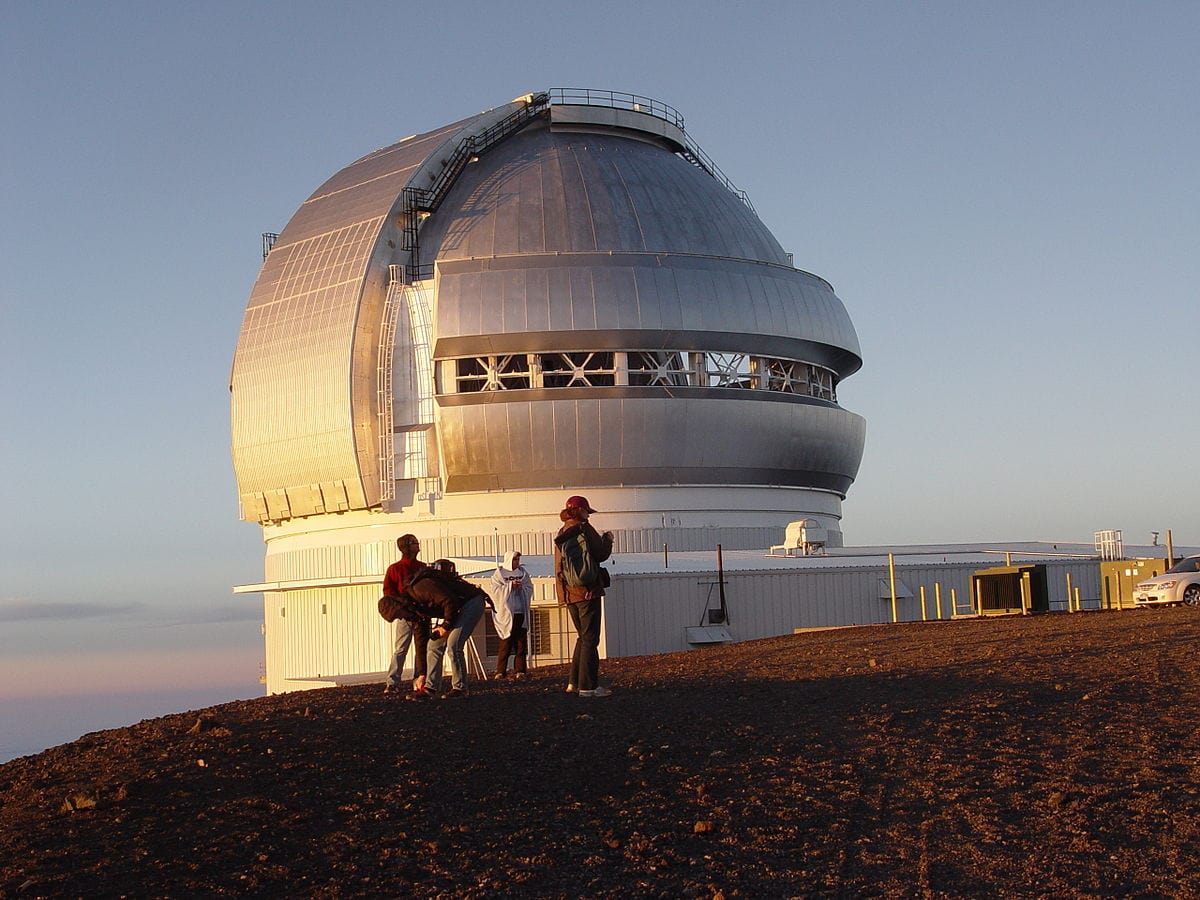
Source: By Mailseth [CC BY-SA 3.0] via Wikimedia Commons
The Gemini Observatory is actually two different sites in two different parts of the world. Together, they provide coverage of the entire northern and southern hemispheres of the sky. Government agencies in the US, Canada, Chile, Brazil and Argentina have joint ownership and operation of the facilities.
The northernmost telescope is located in Hawaii. It is officially called the Frederick C. Gillett Gemini Telescope. It sits high above sea level atop the dormant Mauna Kea volcano.
The southernmost telescope is in Chile in the Andes mountain range.
Did You Know?
The United Kingdom was also a partner in the operation of Gemini, but dropped out due to funding issues. Australia and South Korea are temporary partners now.
-
Very Large Telescope (VLT)
Location: Cerro Paranal, Chile
Mirror size: 8.2m (28 ft)
First used: 1998
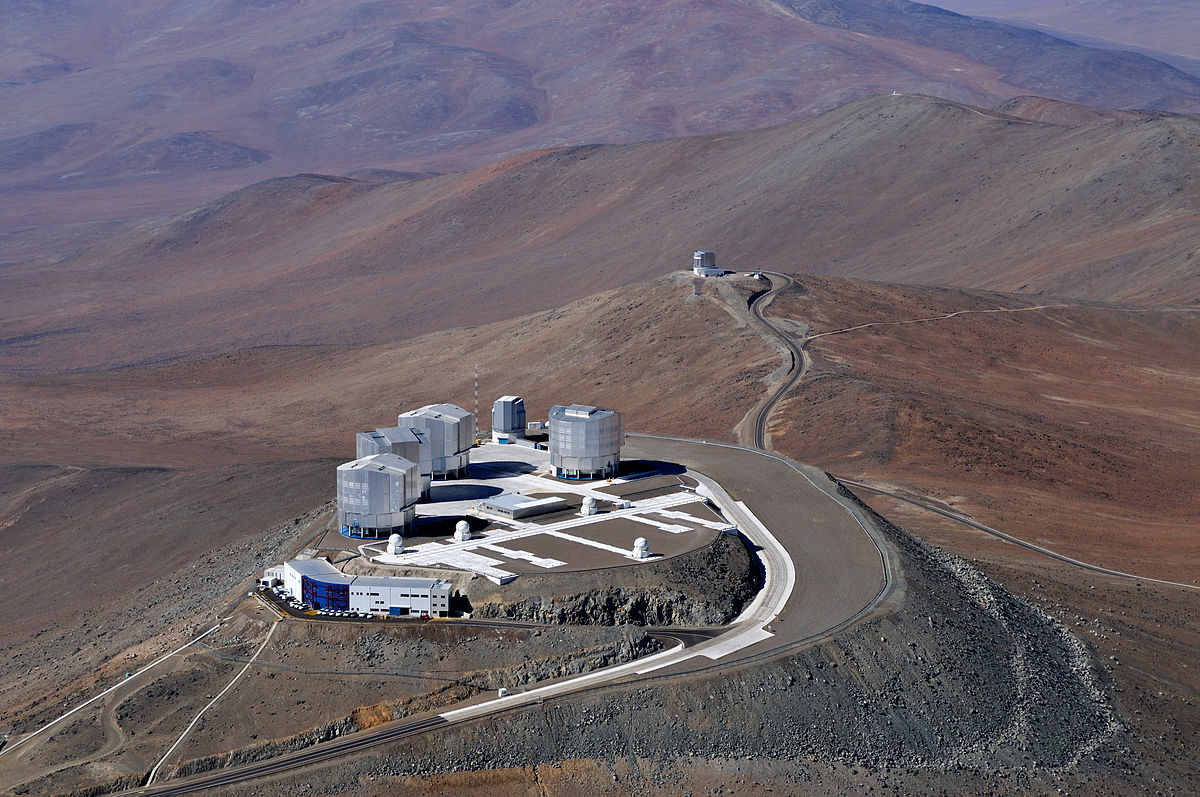
Source: By J.L. Dauvergne & G. Hüdepohl [CC BY 4.0] via Wikimedia Commons
The directors of the European Southern Observatory (ESO) couldn’t have found a better, albeit, generic sounding name for their collection of four, nearly identical optical telescopes. At nearly 30 feet in diameter each, they are indeed very large.
Their size, arrangement and collective use ability make them among the most useful telescopes on Earth. The VLT are used to track stars as they approach event horizons on black holes and photograph planets outside of our solar system.
Did You Know?
The telescopes are designated as units 1-4; however, they do have actual names. They are named for planetary objects in the Mapuche language.
-
Subaru Telescope
Location: Hilo, HI
Mirror size: 8.2m (27.5 ft.)
First used: 1999
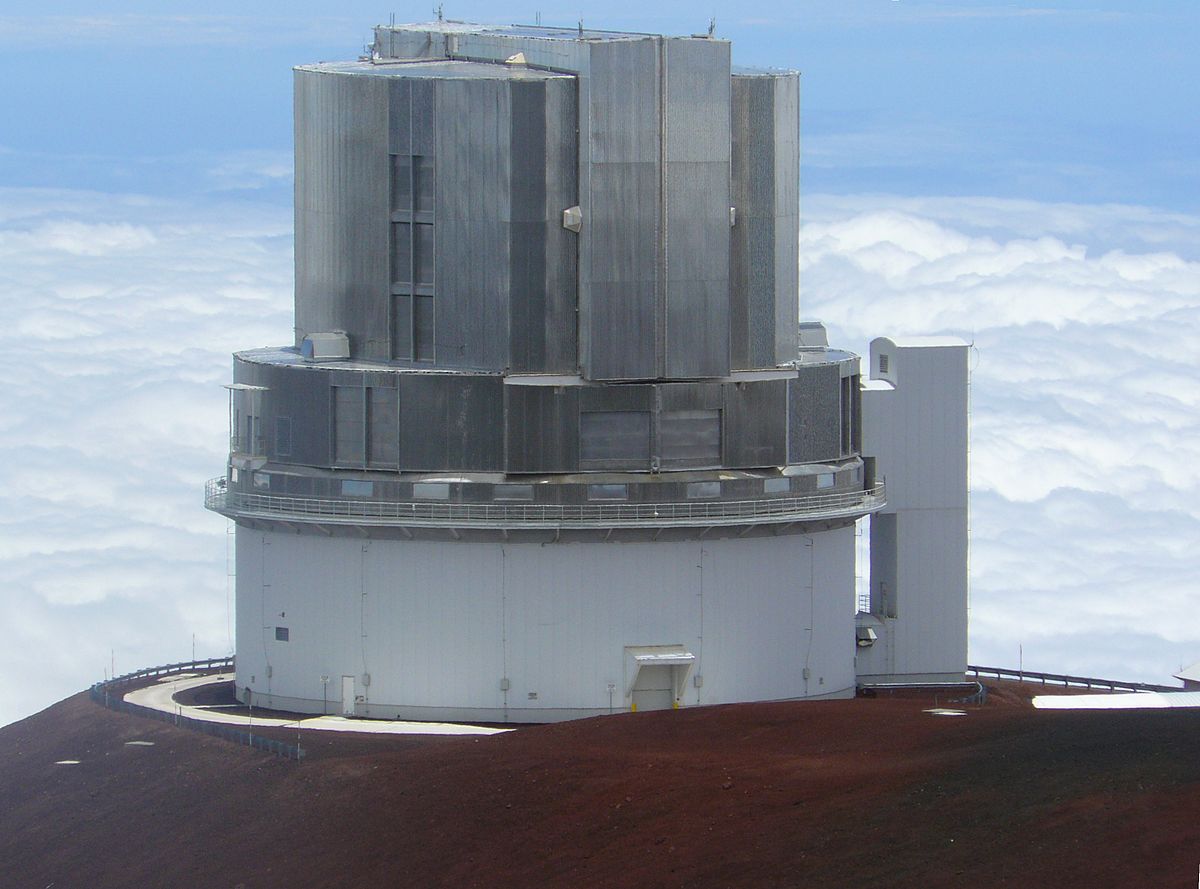
Source: By Denys (fr) – [CC BY 3.0] via Wikimedia Commons
In the 1980s, the National Astronomical Observatory of Japan embarked on a mission to build a large mirror telescope. The organization contracted with the University of Hawaii to construct the telescope there. The consortium completed construction in 1998.
The Subaru is mainly used in search of a hypothetical ninth planet orbiting our sun called Planet Nine. No one has observed this planet. However, observational data of the orbits of the outermost planets suggests that Planet Nine exists.
The Subaru telescope has no association with the Japanese automaker of the same name.
Did You Know?
Most of these massive optical telescopes aren’t normally used with an eyepiece, but with special hardware. The Subaru was temporarily fitted with an eyepiece so that Japan’s Princess Sayako could look through it.
-
Large Binocular Telescope (LBT)
Location: Mt. Graham, AZ
Mirror size: 8.4m (28 ft.)
First used: 2004
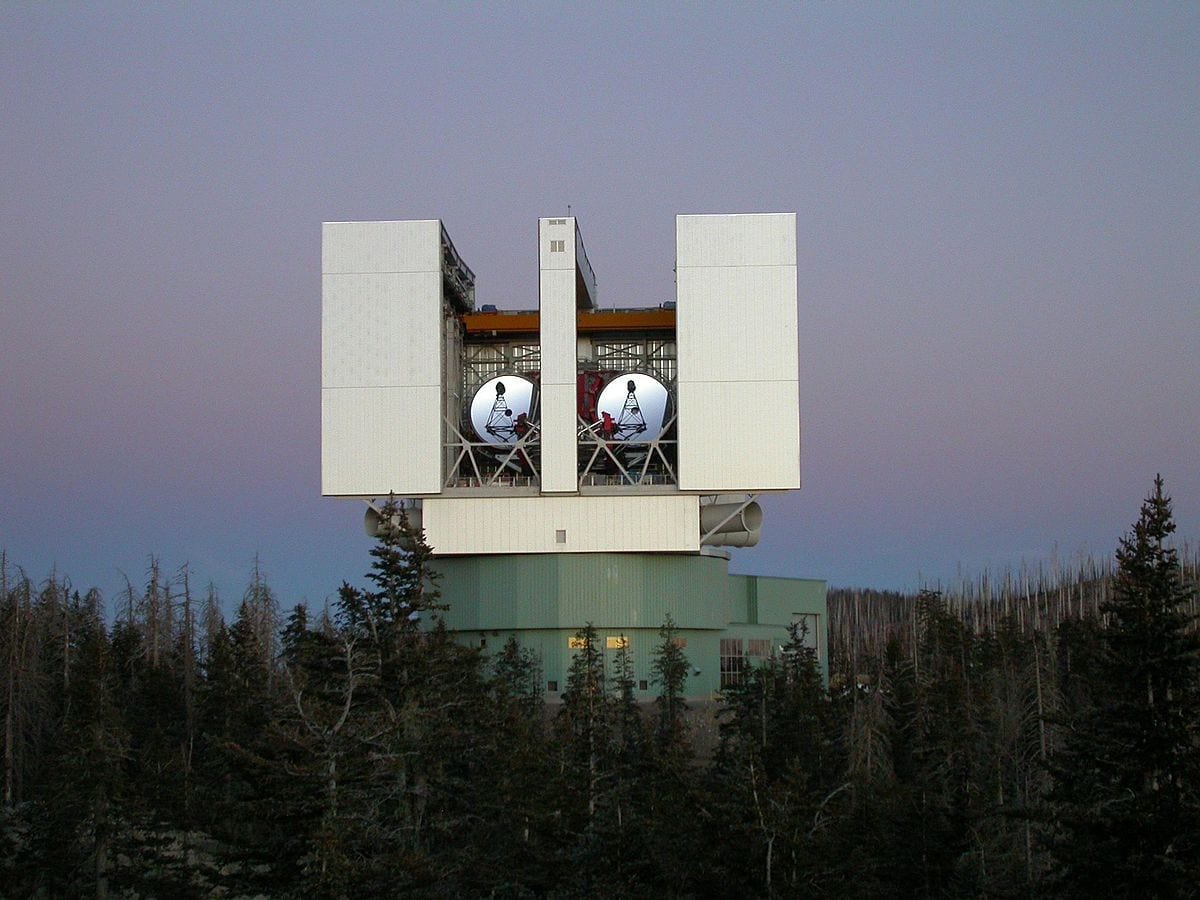
Source: NASA [Public Domain] via Wikimedia Commons
The LBT is in fact binocular. It is a set of twin 8.2m mirrors working synchronously. The telescope has the same detail gathering capability of a telescope twice its size. Its operation is a joint project of various American universities and foreign astronomy associations.
The observatory sits over 10,000 feet above sea level on Mt. Graham. When the site was proposed, the San Carlos Apache tribe tried to stop the construction on religious grounds. Environmental groups believed it would endanger a species found only on the mountain. It took an act of Congress to allow the project to proceed.
Did You Know?
The LBT observed a galaxy previously unseen. It is over seven billion light years from Earth.
-
South African Large Telescope (SALT)
Location: Sutherland, South Africa
Mirror size: 9.2m
First used: 2005

Source: Public Domain
The observatory is located on a hilltop where the SALT shares space with telescopes from other nations. It is a prime location from which to view cosmological phenomenon, and SALT is uniquely designed to do that. The telescope’s mirror is actually 91 small mirrors in an array.
SALT has an ability similar to a fast-reacting SLR camera. It can take pictures of an object in motion, but on a cosmological scale. It has been useful in detecting the Magellanic Cloud and black holes.
Did You Know?
Cosmologists using SALT discovered a “polar” star, a binary system where a dying star feeds from its companion.
-
Keck Telescope
Location: Waimea, HI
Mirror size: 10m (33 ft.)
First used: 1993
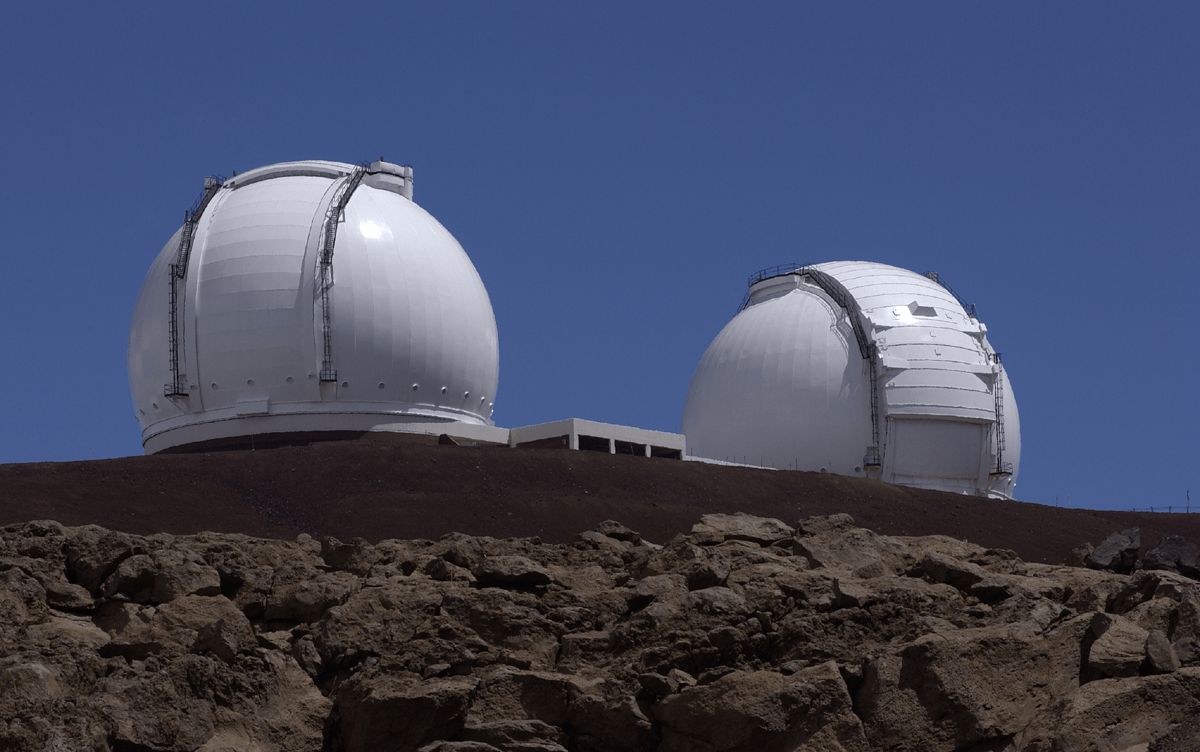
Source: T. Wynne/JPL/NASA Public Domain
The Keck Observatory houses two 10m optical telescopes. The telescopes themselves were built in the early 1990s after two California based astronomers spent years designing them and seeking funding. The main funding source was the philanthropist William Keck.
Thanks to the telescopes power and precision, astronomers use the Keck to confirm theories. Observers have made or verified several discoveries using Keck, including:
- Verifying the existence of a planet outside the solar system
- Improving estimates of the size of the Andromeda galaxy
- Discovering the exact center of the Milky Way
Did You Know?
NASA is one of the operational partners of the Keck Observatory
-
Hobby-Eberly Telescope (HET)
Location: Davis Mountains, TX
Mirror size: 10m
First used: 1996
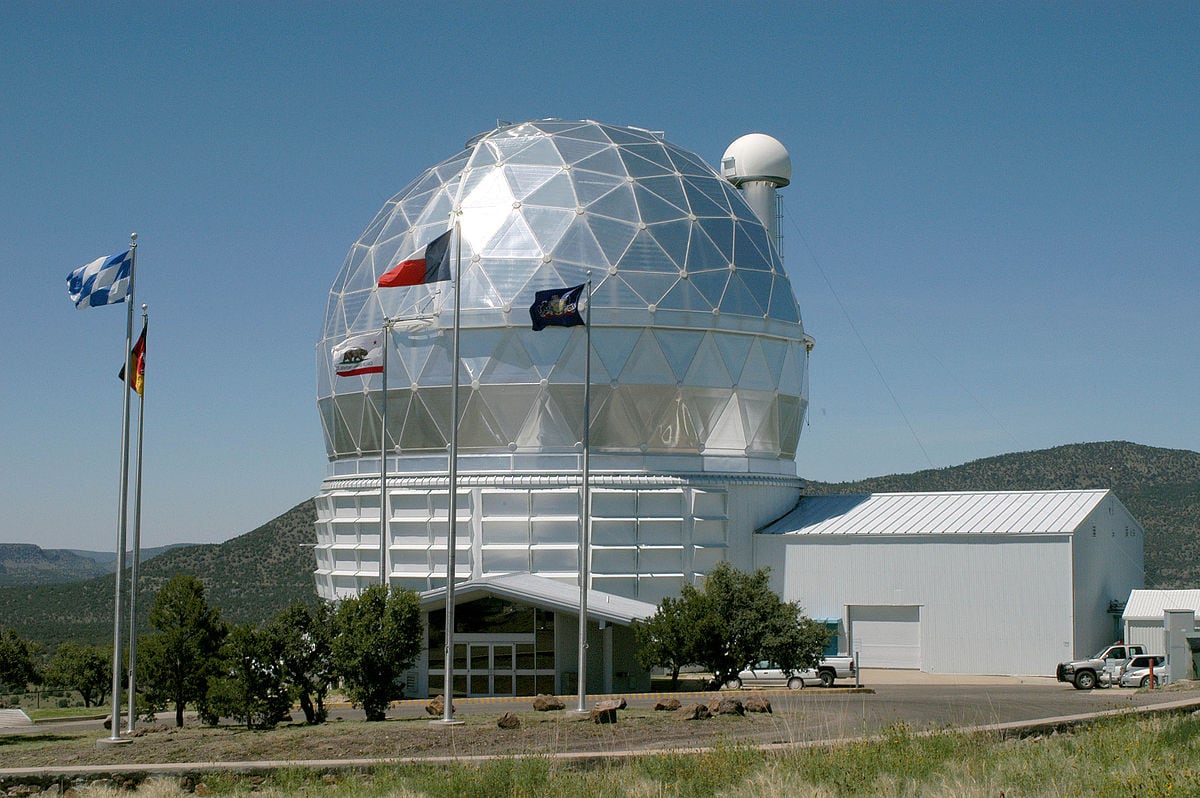
Source: By EricandHolli, [CC BY-SA 3.0] via Wikimedia Commons
The HET is actually larger than the given mirror size. It’s 11m but the viewable space is only 10m. It was only 9.2m before the upgrades. The mirror is, like SALT, made up of several different hexagonal mirrors.
The HET has several ongoing missions:
- Searching for the cause and composition of Dark Energy (HETDEX)
- Search for habitable planets across the galaxy (Habitable Zone Planet Finder)
- Measuring supermassive black holes.
HET has already discovered a planet outside our solar system orbiting other stars.
Did You Know?
HET is the same size as SALT but was 20% cheaper to make.
-
Gran Telescopio Canarias (GTC)
Location: La Palmas, Spain
Mirror size: 10.4m
First used: 2009
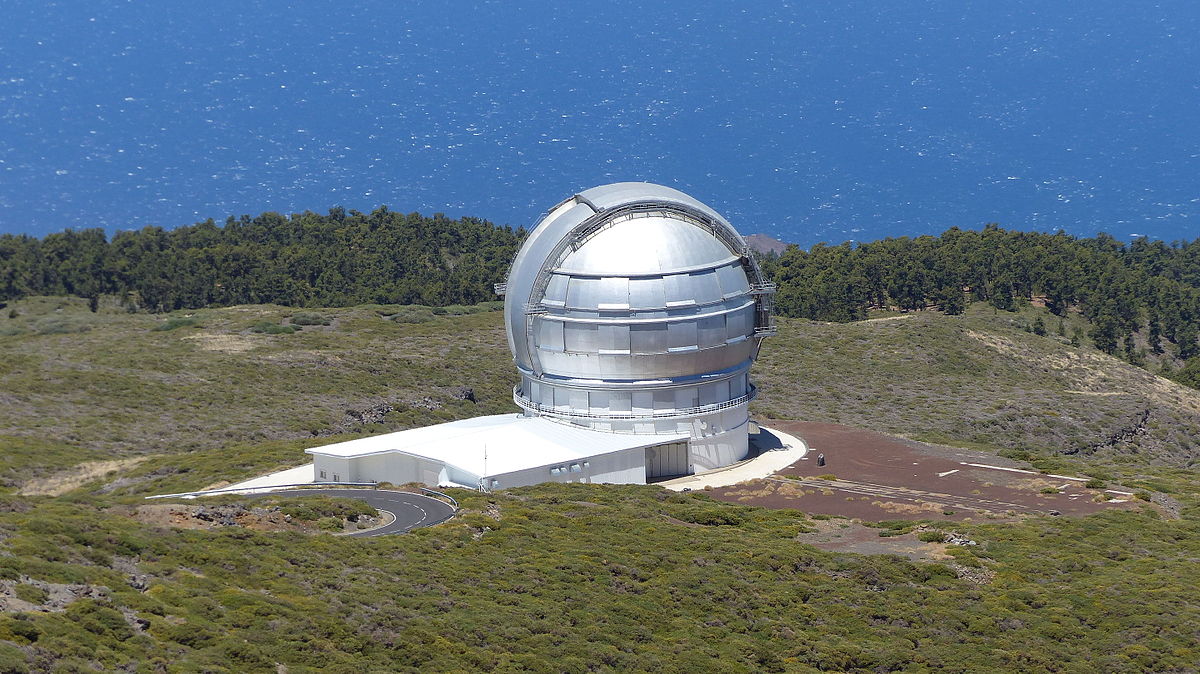
Source: By Benjamín Núñez González [CC BY-SA 4.0] via Wikimedia Commons
The Gran Telescopio Canarias is the largest optical telescope in the world. The 10.4m mirror is actually an array of 36 hexagonal mirrors. It sits over 7,000 feet above sea level.
A recent project allows the GTC to observe the universe’s most unique objects. Astronomers fitted a high-speed imaging device called HiPERCAM to capture supernovae and pulsars in much greater detail than before.
Astronomers once used GTC to verify the discovery of an hobbyist. The amateur discovered a dwarf galaxy on the edge of the Andromeda galaxy. Using GTC, astronomers verified that the galaxy does exist.
Did You Know?
AirBnB combined with the Observatory to offer people a chance to view the 2018 Lunar eclipse and an up close view of Mars.
